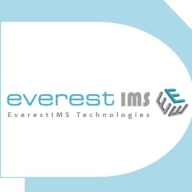

Nagios XI and Infraon IMS are both popular choices for IT infrastructure monitoring. Despite favorable feedback on Nagios XI's pricing and support, Infraon IMS offers more comprehensive features, making it worth the investment.
Features: User reviews highlight robust monitoring, customization, and alerting capabilities of Nagios XI. Infraon IMS is praised for its scalability, real-time analytics, and integration options.
Room for Improvement: Nagios XI users suggest enhancing documentation, simplifying configuration, and improving performance. Infraon IMS users recommend reducing complexity, improving the learning curve, and expanding third-party integrations.
Ease of Deployment and Customer Service: Nagios XI is often seen as straightforward to deploy but requires significant configuration effort. User reviews indicate that Infraon IMS offers a smoother deployment process with effective customer service.
Pricing and ROI: Nagios XI is appreciated for its lower setup costs but has mixed feedback on ROI. Infraon IMS, though pricier initially, is seen as providing notable ROI through its advanced features and functionalities.
| Product | Market Share (%) |
|---|---|
| Nagios XI | 3.0% |
| Infraon IMS | 0.5% |
| Other | 96.5% |

| Company Size | Count |
|---|---|
| Small Business | 3 |
| Midsize Enterprise | 2 |
| Large Enterprise | 3 |
| Company Size | Count |
|---|---|
| Small Business | 22 |
| Midsize Enterprise | 17 |
| Large Enterprise | 21 |
Infraon IMS offers network monitoring with real-time dashboards, customizable GUIs, and integrated tools, supporting device management and workflow automation efficiently.
Infraon IMS delivers stable performance with features tailored for easy customization and detailed network management. Users benefit from real-time monitoring through role-based dashboards and integrated ticketing tools. However, improvements in reporting, GUI usability, and AI integration are needed. Challenges include monitoring non-IPBS devices and improving connectivity visibility. Users require seamless Infraon Desk integration, ease of device addition, and enhanced topology views.
What are the key features of Infraon IMS?In industries like IT infrastructure and data center management, Infraon IMS is utilized for network monitoring and managing key components such as leased lines and firewalls. Its capabilities aid diverse geographical locations in overseeing data centers, offering centralized monitoring and access to critical infrastructure.
Nagios XI provides monitoring of all mission-critical infrastructure components, including applications, services, operating systems, network protocols, systems metrics, and network infrastructure. Third-party add-ons provide tools for monitoring virtually all in-house and external applications, services, and systems.
Nagios XI uses a powerful Core 4 monitoring engine that provides users with the highest levels of server monitoring performance. This high degree of performance enables nearly limitless scalability and monitoring powers.
With Nagios XI, stakeholders can check up on their infrastructure status using the role-based web interface. Sophisticated dashboards enable access to monitoring information and third-party data. Administrators can easily set up permissions so users can only access the infrastructure they are authorized to view.
Nagios XI Benefits and Features
Some of the benefits and top features of using Nagios XI include:
Reviews from Real Users
Nagios XI stands out among its competitors for a number of reasons. Several major ones are its integration options and monitoring abilities, as well as its alerting features.
David P., a senior DevOps engineer at EML Payments Ltd, writes, “We use Nagios as a network discovery tool. We use Nagios to maintain our uptime statistics and to monitor our services. It has allowed us to be much more sophisticated in our monitoring and alerting.”
An IT-OSS manager at a comms service provider notes, “Nagios XI has a custom API feature, and we can expose custom APIs for our integration. This is a great feature.”
We monitor all IT Infrastructure Monitoring reviews to prevent fraudulent reviews and keep review quality high. We do not post reviews by company employees or direct competitors. We validate each review for authenticity via cross-reference with LinkedIn, and personal follow-up with the reviewer when necessary.